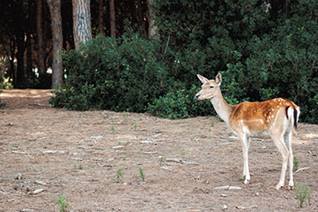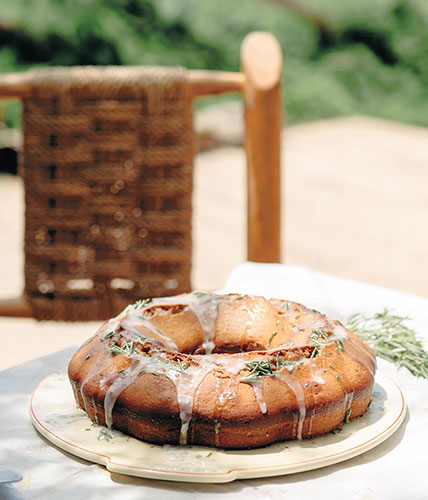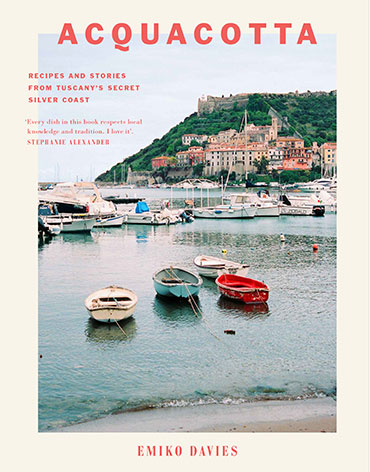Chestnut Flour Bundt Cake
Emiko Davies' Chestnut Flour Bundt
1 Sep 2017 |
 |
Where there are chestnut trees, there are chestnuts prepared and eaten in all manner of ways. Chestnut flour has always been a good way to make chestnuts last through the winter months and beyond, and while Castagnaccio is the most well-known and traditional way to use it in Tuscany, chestnut flour is also used in cakes and pasta, just like regular flour. In the case of cakes, it’s best when mixed with regular plain flour as it doesn’t have gluten and has a rather dense texture when cooked. But even a little is enough to lend the cake that distinct smell and flavour of chestnuts, and a pastel caffe-latte colour. |
|
This ring-shaped cake is known as Ciambellone dell’Amiata, referring to the use of chestnut flour from the volcanic Mount Amiata. It’s an area well known for its chestnuts, which even have IGP (Protected Geographical Indication) status, meaning they are recognised for their quality. The rosemary icing is my addition to this otherwise traditional cake. It gives the cake a pretty finish and I love the flavour of rosemary in Tuscan cakes and breads.
|
 |
 |
CIAMBELLONE ALLE CASTAGNE | CHESTNUT FLOUR BUNDT CAKES MAKES 1 CAKE, SERVES 10 150 g (5½ oz) butter, at room temperature 200 g (7 oz) sugar zest of 1 orange 4 eggs, at room temperature 150 g (5½ oz/1½ cups) chestnut flour, sifted 250 g (9 oz/1 2/3 cups) plain (all-purpose) flour 1½ teaspoons baking powder 125 ml (4 fl oz/½ cup) milk 2 tablespoons rum (optional) ICING 1 tablespoon rosemary, leaves picked 50 g (1¾ oz) icing (confectioners’) sugar, sifted 2 teaspoons warm water |
For the full recipe go to Cooked.com
Acquacotta by Emiko Davies is available now in good shops that sell books and online at Amazon and Waterstones.
Photography by Lauren Bamford
